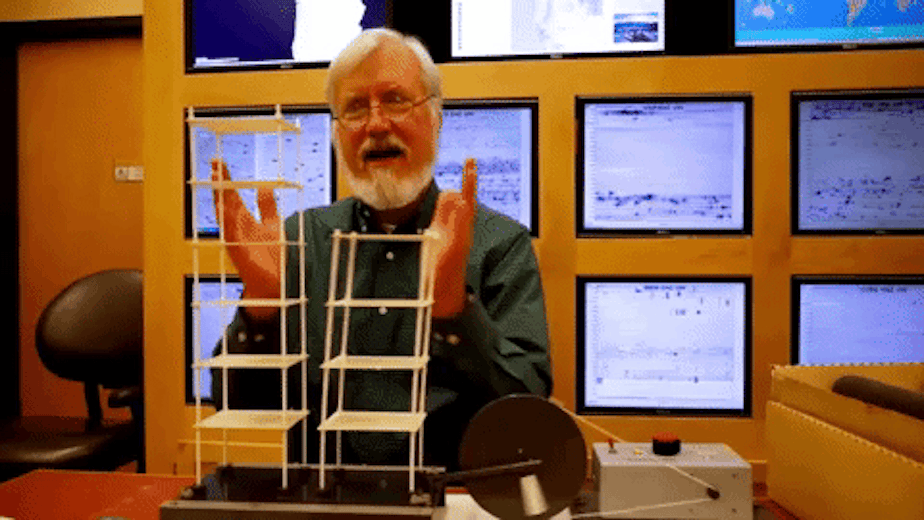5 reasons a tunnel is safer than the Alaskan Way Viaduct

The Seattle region has been growing so fast, there are now 400,000 more people here than in 2009, when we agreed to replace the Alaskan Way Viaduct with a tunnel.
For those who weren't here for our viaduct-replacement drama, here’s a quick review of why the Alaskan Way Viaduct comes down next year, replaced with a tunnel that we could be driving through by October. And, if you are wondering about the safety of the tunnel replacement - some people have contacted us to ask - here are answers.
1. The Alaskan Way Viaduct is literally a disaster waiting to happen.
The Cypress Structure in Oakland California told us so. It was similar in design to our viaduct, and in the 1989 Loma Prieta earthquake, it was a scene of death and destruction.
Sponsored
Our own viaduct was damaged in the 2001 Nisqually earthquake. It took a while, but that settled the matter — we needed a replacement.
2. Earthquake forces diminish a lot when you go underground.
According to Steve Kramer, a University of Washington engineering professor, the strength of the shaking that you feel decreases as you descend below the ground surface.
This is seconded by seismologist Paul Bodin. “Underground, the (seismic) wave field is weaker in the deeper parts and the wave field isn’t distorted very much.”
It’s different from what happens at the ground level or higher.
Sponsored
“When those waves hit the surface and there’s a structure that’s built on top of them, they kind of extend up the structure and it wiggles a lot,” Bodin said.
You can see that in this video from Bill Steele of the Pacific Northwest Seismic Network at UW.
3. A tunnel moves with the ground, and that’s a good thing.
Said Kramer: “It becomes almost part of the ground. And so it just moves back and forth as the ground moves back and forth.”
Sponsored
4. Our new tunnel sits in good, dense, compacted, stiff, strong soils.
You can thank that 2,500-foot ice layer from 12,000 years ago.
5. They accounted for the potential weak spots.
Even at the two ends where the tunnel approaches the surface, and thus where the soil weakens and the strength of the shaking grows, Kramer said it'll be okay.
“The ends of the tunnel were designed to have the same level of safety as the center part of the tunnel does. So it's a stronger tunnel where it needs to be stronger and it's not as strong where it doesn't need to be as strong,” Kramer said.
